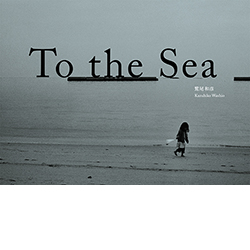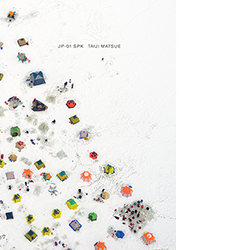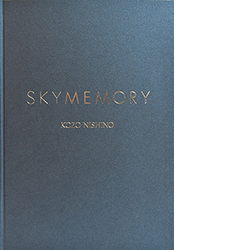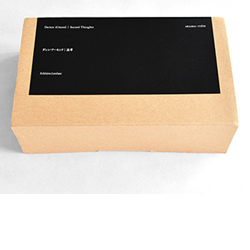
鷲尾和彦 写真集
アートディレクション:近藤一弥
Photographs by Kazuhiko Washio
Art Director : Kazuya Kondo
Published in July 2014.
About Book
海はひとつの記憶であり、海に向かう人々は世界を共有している。
ノーベル文学賞受賞作家 ル・クレジオ氏が本書のために序文を寄稿
作家の日常の地続きとしてある神奈川県相模湾をはじめ、2011年3月以後の東北地方沿岸風景も含まれる本作は、日本各地の海辺の風景とそこに佇む人びとの姿を10年以上に渡り撮影した写真集です。
神迎えの儀式が行われる八重山諸島、有刺鉄線がはられた辺野古の砂浜、日々を暮らす湘南の海辺、そして、震災直後の三陸海岸。
写真家 鷲尾和彦が向かったそれらの海はまた同時に、「何度も同じ場所を訪ねたが、一度たりとて同じ海に巡り会うことはなかった。」と語る海でもありました。
この写真集に寄せた序文の中でノーベル文学賞作家のル・クレジオ氏は「海は気まぐれなのではない。海は多様で、とらえがたいのだ。 人はだれでも、どこにいても、海の子供なのである。」と言います。そしてそこに向かうという感情について、それは「愛、敬意、感謝の念」であるとも。
海に向かい、水平線を見つめ、潮の満ち引きに呼応するように見つめるとき、わたしたちはそこに何を見るのか。失いかけたものたちを呼び戻す連なりの一冊。
「鷲尾氏が私たちに見せる映像のなかで最も美しく、最も重い意味を担っているのは、おそらくこれらの写真である。 海と、それなくしては生きていけない陸の民とを結びつける、不滅の絆を示しているからだ。 海は気まぐれなのではない、この本の教えるところを信じよう。 海は多様で、とらえがたいのだ。 海は神々しく、かつ人間的だ。 人はだれでも、どこにいても、海の子供なのである。」――――J・M・G・ル・クレジオ
Of all the pictures that Mr.Wahio has given us to look at, these latter are certainly the most beautiful, the most full of meaning, because they show the enduring link which unites the sea with earthlings, who could not live without her. The sea does not change - let us believe the lesson from this book. She is many- sided and she is elusive, she is divine and she is human. Whatever we are, wherever we are, we are her children. ――――J.M.G. Le Clézio
To The Sea
Kazuhiko Washio began photographing the seashore in Sagami Bay on Japan's Pacific coast in the late 1990s. From here he embarked on a project which would consume him for many years: walking Japan's countless beaches to photograph the nexus of land, sea and humanity. As the number of images swelled, a broader narrative became apparent - one of the ever-changing, yet timeless pull of the ocean on those who journey to the sea. In Washio's shoreline, we see silhouettes of people atop wet black sand, or immersed in steadily lapping waves. These individuals are representative of the feelings that all humans may feel when encountering the ocean. The sea spreads to the horizon, but these photographs find their energy where the water strikes the earth.
The tone of Washio's project shifted as he continued making images along the ravaged coast of Japan's northern Tohoku region soon after the March 11, 2011 tsunami. The implacability of the sea - its distance from and power over humanity - is apparent. J.M.G. Le Clezio, winner of the 2008 Nobel Prize for Literature, notes the following in the preface:
Of all the pictures that Mr. Washio has given us to look at, these latter are certainly the most beautiful, the most full of meaning, because they show the enduring link which unites the sea with earthlings, who could not live without her. The sea does not change - let us believe the lesson from this book. She is many sided and she is elusive, she is divine and she is human. Whatever we are, wherever we are, we are her children.
The sea in this collection of images is never dependent on humanity. Indeed, humanity is dependent on it, whether economically, spiritually, for pleasure, or as a more atavistic way of finding peace with the vast surface reaching out to the horizon. Like photography, this is a silent matter. Regarding the quieting effect that the sea can have on the soul, Washio writes that during his shoreline journeys:
I also encountered others who had come to the sea on the various beaches I visited. Sometimes we would exchange words, but in most cases we would remain silent as we pursued the unregulated, perpetual movement of the waves breaking on the shore.
To the Sea serves as a beautiful document and expression of mankind's emotional and physical state at this convergence of land and sea, the two aspects of our planet's nature.
Artist Information
鷲尾和彦|Kazuhiko Washio兵庫県生まれ。
1997年に独学で写真を始める。
2009年、写真集『極東ホテル』(赤々舎)を出版。
2011年、作家・詩人の池澤夏樹氏とともに東日本大震災発生直後から被災地を訪ね、共著『春を恨んだりはしない』と写真集『遠い水平線 On The Horizon』とを刊行。
Born in Hyogo Prefecture, Japan.Self-taught, Washio began his career as a photographer in 1997.
In 2009, he published a photo book called Hotel Fareast, focusing on foreign visitors in Japan.
And in 2011, immediately after the Great East Japan Earthquake, he embarked on a trip to the stricken area with the writer/poet Natsuki Ikezawa. This joint project resulted in two books, Haru wo urandari wa shinai (I don't begrudge the spring) and On The Horizon, a collection of photographs.







